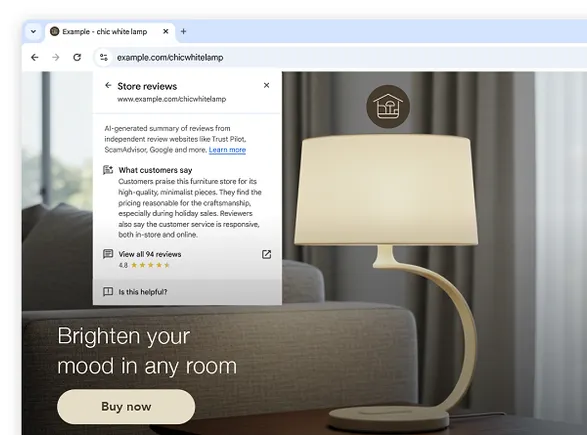How To Make A Video Go Viral via @sejournal, @gregjarboe
In this article, Greg asked video marketing experts to share their thoughts on how to make a video go viral, including best practices and examples. The post How To Make A Video Go Viral appeared first on Search Engine...

By now, all SEO experts and digital marketers are familiar with the term “going viral.”
Odds are fairly likely that you’ve been in a room when someone has asked a content marketer or social media manager to “make a viral video.”
Unfortunately, the task isn’t as simple as it seems.
Videos don’t go viral every day – and when they do, it’s not always expected. Too often, the videos you think will take off don’t. There’s no step-by-step tutorial or cheat sheet for creating a viral video; it all depends on how people react to it and whether they’re compelled to share it with their friends.
In this article, I’ll go over what a viral video is, how they spread across different platforms, and the easiest way to create one, before sharing some tips from YouTube experts on how to make your videos go viral.
What Is A Viral Video?
In recent years, the words “viral video” have become a household phrase. But what do they actually mean?
Before diving into how to make a video go viral, let’s define what constitutes a viral video.
A viral video isn’t defined by the specific number of views it receives but by the means and velocity by which it “spreads” to new audiences through social sharing.
According to Ian Forrester, Founder and CEO of DAIVID, a viral video is:
A video which has a high share rate (shares/views x 100) or; A video which gets picked up by a platform algorithm and shown to a large number of viewers.Let’s break that down with an example.
Imagine you were to upload a video to Instagram, where you have 5,000 followers. You see above-average engagement from your followers on this content, so the Instagram algorithm starts serving it to more of your followers.
One of those followers reposts that video to their Instagram Story, thus sharing it with their 500,000 followers. One of their followers then reposts it to their 1 million followers. Instagram recognizes your video is gaining traction and begins serving it in the Explore tab.
In this process, your video rapidly generates far more views and engagement than you had initially expected.
Congratulations, you’ve “gone viral.”
But what about a video makes it go viral, and what can we learn from existing viral videos? Many marketers ask themselves these questions – and the answer lies in paying attention to performance.
Professor Karen Nelson-Field PhD, Founder and CEO of Amplified Intelligence, said:
“So, when a video does share above expected – what is different about these videos? When we isolate the effect of reach in content that deviates well above what is expected, we can see where creative quality kicks in.”
Dr. Nelson-Field, who is the author of Viral Marketing, also provided “some dot points”:
Content that draws a “high-arousal” positive emotional response is shared more. In particular, videos that evoke feelings of hilarity, inspiration, astonishment, and exhilaration tend to be shared the most. However, while video creators may be aiming to create hilarious and inspiring material, most are falling well short on both counts. Content that draws a high-arousal emotional response, regardless of valence, can be shared around twice as much as low-arousal content. But proceed with caution if you choose the high-arousal negative space; little is known about its long-term consequences for the brand. On average, videos that elicit high-arousal emotions gain twice as much sharing as those that elicit low-arousal emotions. Yet, more than 70% of all commercial videos evoke low-arousal emotions.How Many Views Do You Need For A Video To Go Viral?
So, do all viral videos receive millions and millions of views? Not necessarily.
Ian Forrester said:
“There’s no established number, but any video with over 1 million views is likely to have some element of virality contribute to the view number (over and above paid views).”
But, while it’s likely that videos with over 1 million views have benefitted from some form of a viral spike, that’s not always the case.
Dr. Nelson-Field shared her thoughts on what it means for a video to go viral:
“What it doesn’t mean… is that all viral videos are ‘huge’ in the sense of highly famous videos you naturally think of. In actual fact, even small/low-viewed videos can be viral if it shares above what is expected. The reality is big and viral videos are rare.”
So, as we covered above, virality is more about how a video is distributed than how many views it garners – though views are certainly a part of the equation.
How Does A Video Go Viral On YouTube?
If you read “Top 40 Viral Videos of All Time,” then you’ll learn there’s no one formula for making a video go viral on YouTube. But there are a few things that you can do to increase your chances of success.
First, it is important to create high-quality content that is relevant to your target audience. Your video should be well-produced and engaging, and it should address a topic that your viewers are interested in.
Second, you need to share your video on your own social media accounts. Then, email it to your friends, family, and colleagues and encourage them to share it as well. You can also submit it to relevant websites and blogs.
Third, you need to get lucky. There is no guarantee that your video will go viral, even if you do everything right. It all depends on whether or not people find your video interesting and share it with others.
For some additional tips, read “A Beginner’s Guide to YouTube Marketing” and “10 YouTube Marketing Strategies & Tips (With Examples).”
What Makes A Video Go Viral On TikTok?
TikTok is built on a content graph, not a social graph, and as a result, content lies at the heart of making a video go viral on the platform.
Here are a few things that can make a video go viral on TikTok:
Authenticity: Brands do best on TikTok when they find their niche, actively listen to their audience, and then create authentic content that closely aligns with the community in a genuine way. Timing: TikTok videos that are released at the right time are more likely to go viral. This could mean releasing a video during a popular holiday or event, or releasing it at a time when people are most likely to be using TikTok. Humor: Funny videos are always popular on TikTok, and they are more likely to go viral than other types of videos. If you can make people laugh, they are likelier to share your video with their friends. Viral trends: TikTok is all about trends, and videos that follow popular trends are more likely to go viral. If you can find a trend that is taking off on TikTok and create a video that fits the trend, you have a good chance of going viral. Viral music: Videos that use popular viral songs are more likely to go viral than videos that do not use popular viral songs. If you can find a song that is taking off on TikTok and use it in your video, you have a good chance of going viral. Engagement: Videos that get a lot of engagement are more likely to go viral. This means that videos that get a lot of likes, comments, and shares are more likely to go viral. If you can get people to engage with your video, you have a good chance of going viral. Always-on: TikTok says, “Aim to post 1-4 times per day to test how different types of content are received.” So, if you want to go viral on TikTok, then you need to “produce a continuous, high-volume supply of fresh content.”For some additional tips, read “TikTok Introduces More Ways To Boost Organic Content With Promote.”
What Is The Easiest Way To Go Viral?
According to Tubular Labs, 4.9 million accounts have uploaded 53.6 million videos to YouTube in the last 30 days. But only 58,100 of these videos got a minimum of 1 million views and 36,000 engagements.
That means the odds of your video going viral are about 1 in 1,000, which are also the odds of cracking open an egg with a double yolk.
To improve your odds, try using one of these relatively easy ways to get your video to go viral:
Go short: YouTube says, “ YouTube Shorts are the fun, easy way to create content for YouTube’s billions of users. All you need is a mobile phone, your ideas, and a little help from our tools.” For a recent example, watch “😲😱😱😱🤯😱🤯 #viral #short” by Smart Gadgets Warehouse. Use influencers: Scroll down to read Louderback’s advice in “What’s The Alternative To Spending $7 Million On A Super Bowl Ad?” He suggested, “Give it to MrBeast. Tell him to do something fabulous and on-brand for both of you.” For the latest example, watch “Giving 20,000 Shoes To Kids In Africa,” which was sponsored by Lectric eBikes. Buy ads: Before deciding to use paid promotion, re-read “TikTok Introduces More Ways To Boost Organic Content With Promote.” Dennis Yu, CEO of BlitzMetrics, recommends spending $5 a day for 7 days to promote a TikTok video. Then, look at the analytics. If it’s good, then spend $10 a day for another 20 or 30 days.3 Tips From YouTube Experts To Make Your Video Go Viral
When it comes to making videos go viral, nobody is better equipped to give advice than those who have done it in the past.
Here are three insightful tips from YouTube gurus and video marketing experts that can help you in your quest to make a viral video.
1. If You Start With A Small Viewing Base, The Video Will Remain Small
Professor Karen Nelson-Field PhD said:
“A viral video is considered to be a video that is so engaging that it is shared to many beyond the number of views it has achieved. So, for example, that an ad will ‘go viral’ like an infectious disease that spreads to millions from a small base – if the video is infectious enough!”
She added,
“However the reality is most social videos don’t go ‘viral’ – even the big famous ones share in line with expected. This means that viral marketing is not akin to biological epidemics i.e., that (good) content will spread to millions from a small base. Actually, the distribution is the other way around.
This is because even for the best examples of creative the ‘pass along rate’ is a fraction of what most think. The average pass along (or sharing) rate at the time of this work was 24:1. This means that 24 people need to view, for one person to share.”
She concluded,
“If you think about that, this means that the shape of the viral diffusion curve is the opposite of a viral disease. Viral video is a ‘many to one’ distribution, while a viral disease distribution is ‘one to many.’
So, reach (or paid seeding) is the single largest predictor of success. This means if you start with a small viewing base the video will remain small. Therefore, the way industry defines virality is misleading.”
2. Virality Is Driven By The Platforms
And Ian Forrester said,
“Traditionally, when virality depended on users sharing content, content needed to have two distinct factors to go viral: an intense emotional response and a social motivation to share.
Social motivation was the rational reason why a human would share the content. Some examples are ‘Social Good – because it’s for a good cause’ or ‘Shared Passion – to connect over a shared passion or interest’.”
He added,
“Now virality is driven by the platforms, TikTok in particular, and humans don’t need to share content for content to go viral. In this situation, the algorithm will identify a piece of content as strong if a large proportion of users who see it engage with it and/or watch it to the end.
In this case, the impact of social motivations is reduced. Viewers will engage with a piece of content or watch to the end if it is sufficiently emotive.”
He concluded,
“In a world in which many things vie for the audience’s attention, attention in the first three seconds has also become critical to success. In order to get to the emotive punchline, a video must first grab attention. So, in today’s world, where virality is driven by algorithms, attention and emotions are the key drivers.”
3. Virality Can Be Influenced, But Not Made
Jim Louderback, Editor, and Publisher of Inside the Creator Economy, said,
“I’m not really a fan of the premise. I don’t think you can ‘make’ a video go viral without spending a lot of money – and then, in that case, you are just buying views (see Ozy Media).”
He added,
“You can increase your chances of a video going viral – and it’s different on different platforms – by leaning into some specific things.
Quality content, fun and entertaining, surprising, appealing to emotions (happiness and sadness), being unexpected, all help. But on TikTok, say, leaning into trends works, along with picking trendy music. Duets are a way to help too.”
He concluded,
“But in the end, virality can be influenced, but not made.”
That’s what I discovered when I asked a couple of people with a great deal of E-E-A-T to share their thoughts on the topic.
In Summary
Let’s not beat around the bush: There is no “secret sauce” to make a video go viral.
As much as your boss or your client wishes there was a button you could press to make your content spread like wildfire, there isn’t.
But the good news is that there is a wealth of information, best practices, and advice out there to help you set yourself up for success – much of which we have covered in this article.
Take your learnings in stride, experiment, and focus on providing value to your audience first and foremost, and you’ll have a viral hit in no time.
More resources:
Video Marketing: An In-Depth Guide For Every Business Owner Today Video SEO: 10 Steps to Optimizing Videos for Search and Discovery The 10 Best Video Search EnginesFeatured Image: Antonio Guillem/Shutterstock

 Kass
Kass 





























